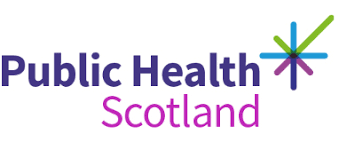
Dr Joanna Teuton,Public Health Intelligence Adviser,Public Health Scotland
“I began a college course…. I had to leave home at 7am to walk across town with my child to childminder, as no buses to that area, then walk back across town to catch bus then run, on foot, to college for a 9am start… I had breakdown as both myself and my child were exhausted from this due to heavy traffic and late picking up child and being charged late fees” (single mum, one child, rural areas)
This quote from: McHardy and Rees, The Poverty Alliance. Transport and Child Poverty: Beyond the Pandemic (2021) has stayed in my mind.
Transport and health
Transport is essential for our health and wellbeing. It enables us to access education and employment opportunities, affordable and good quality healthy foods, leisure and the natural environment, social opportunities and health and social services. These are all building blocks of health and wellbeing – the things we need in our lives to give us the best chance of being healthy.
Sustainable transport - walking, wheeling, cycling and public transport - provides us with opportunities for physical activity and reduces the harms to health from motorised vehicles such as pollution, road traffic collisions and greenhouses gases which are responsible for global warming and climate change.
Transport poverty
We know that not everyone has the same transport choices. Inequalities in transport options is often referred to as Transport Poverty. This has implications for health, because it means not everyone has equal access to the building blocks of good health.
People on low incomes, disabled people, people with chronic health problems, older people, women and those working outside normal working hours are some of those with fewer transport options.
The research by the Poverty Alliance published by Transport Scotland starkly illustrates this. They highlighted the role that transport has in shaping the lives of families on a low income either to exacerbate or alleviate poverty.
The Public Health and Sustainable Transport Partnership group, hosted by Public Health Scotland, brings together national and local government, health boards, third sector organisations and academics to help support the development of transport policy and practice that promotes health and equity alongside sustainability and economic growth.
We think transport poverty is an important priority. We are working to develop a shared understanding of what transport poverty is; what systems and factors, both inside and outside the transport system, contribute to transport poverty; and, how transport poverty influences health and health inequalities. This will enable us to help shape policy and practice to reduce transport poverty and contribute to better health for all.
We know that cost is a main obstacle to use of transport and an important way in which transport impacts on inequality. Around 14% of household weekly budgets are spent on transport – this is second only to housing costs (17%). This is a significant burden for those on low income. Thirty-nine percent of people from the lowest income households reported that transport costs were unaffordable compared with 14% in the highest income households Those on low income are also less likely to have access to a car or a bicycle.
But we know that that transport poverty isn’t just about cost.
To use the services and take up the opportunities we need for healthy living, the transport system also needs to be accessible - to meet everyone’s physical, sensory, mobility, cognitive and mental health needs. In Scotland around third of adults aged 16 years and over have a limiting long term physical or mental health condition. Many disabled people report that the transport options available do not meet their needs.
Transport systems also need to be available and reliable. In many urban areas, low-income communities lack the transport services needed to reach employment. Similarly, in rural areas longer distances and limited public transport mean many people are forced to run a car even if this causes financial hardship.
Finally, transport systems need to be safe for people to use. We know that women and girls, disabled people and other marginalised groups often don’t use public transport and avoid many pedestrian and cycling routes because they do not feel safe.
As we grapple with the cost-of-living crisis and the dual challenges of achieving a just transition to net zero and reducing health inequalities, we need actions to reduce transport poverty and ensure everyone can reach the services and facilities they need.
Look out for our forthcoming publication and partnership sessions later this year on transport poverty, health and equity.


Enter your email address to receive regular e-updates about our work. If at any time you want to stop receiving these, simply contact us. We’ll keep your details safe and won’t share them with any other organisations for their marketing purposes. For full details see our Privacy Policy.